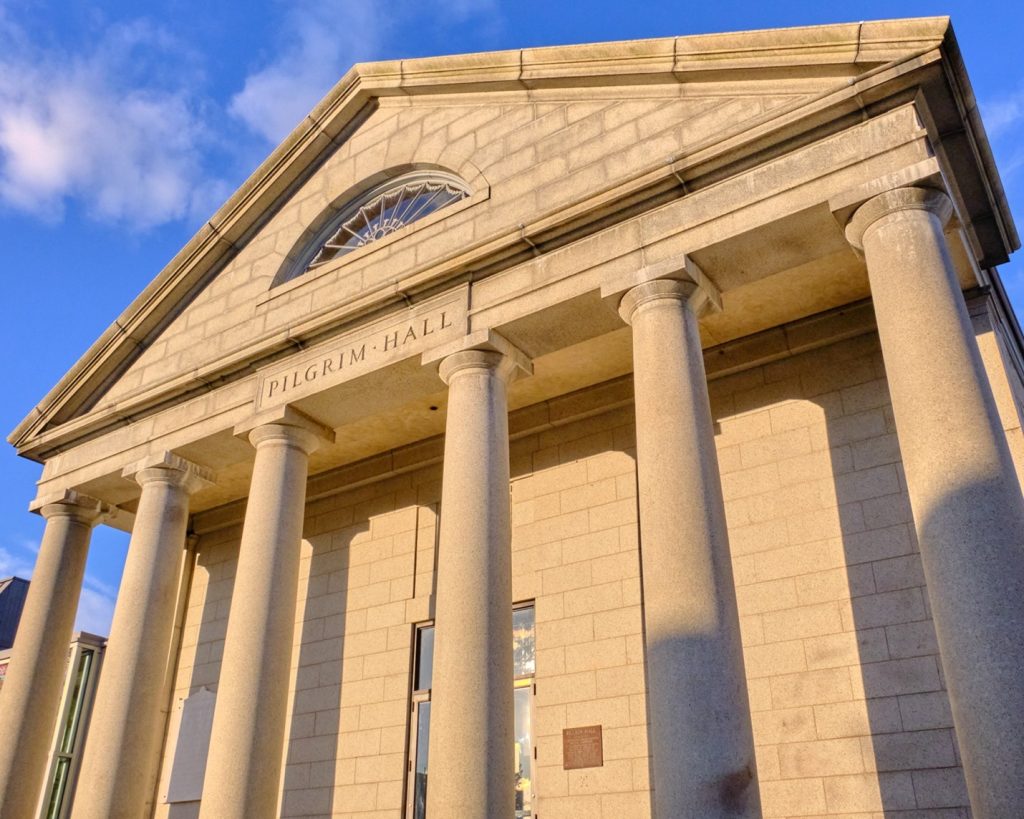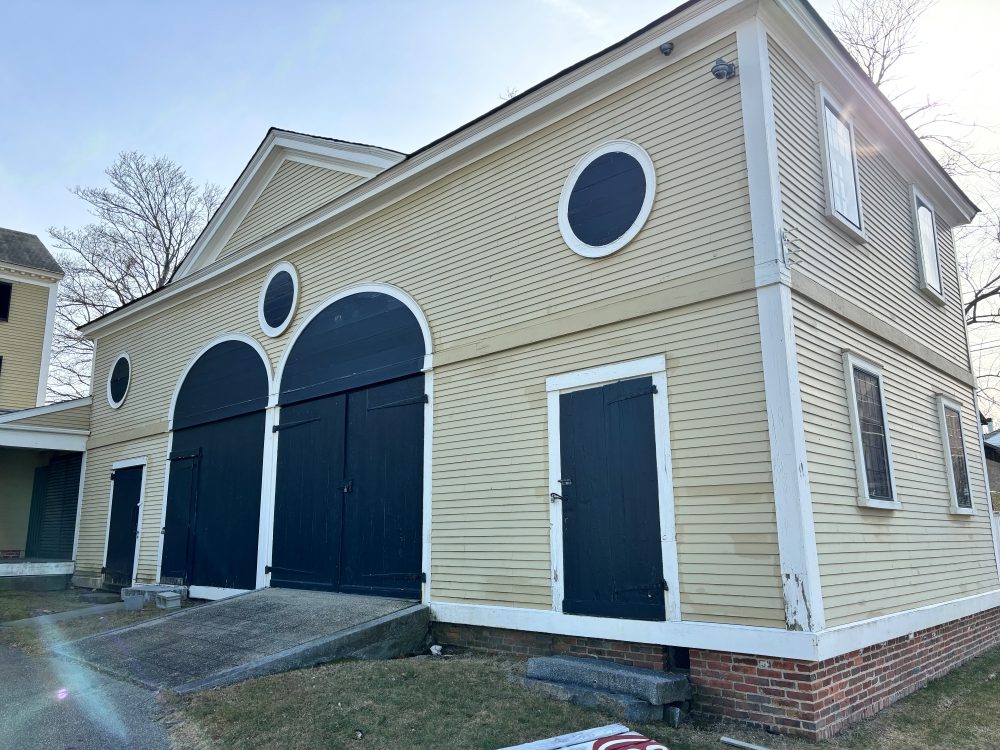Dostadning. It’s a mashed up Swedish word combining death and cleaning. It was derived by Swedish author Margareta Magnusson who wrote the book “The Gentle Art of Swedish Death Cleaning” in 2017. The basic premise is to purge your life of possessions so it does not fall to your children to deal with them.
I have been trying hard to follow Magnusson’s advice. I recently purged a place setting for 20 that belonged to my grandmother. I keep a place setting of four. I did the same with my mother’s china. I kept a place setting of four, gave a setting of four to my daughter (which is still in a box at my house) and the rest went to Savers. Yes, there was some value in the place settings but as a cousin told me: “Is the money you make worth the time it will take to organize the sale?” No was the answer.
The bigger question is what to do with my collections of historic artifacts. I own a vintage postcard collection of Plymouth that exceeds 1,000 cards, along with several other historic paper documents. Those are probably easy to find homes for. But what about paintings, furniture, and architectural elements from various Plymouth buildings? I also have a large upright triangular stone that marked the border between Plymouth and Bourne on Herring Pond Road. I acquired it when construction of a new home threatened its existence. It has served as my back doorstep for the last 25 years.
I’m hoping all this “stuff” will eventually end up at one of the local museums here in town. But therein lies the problem. I am not the only one looking for a home for my painstakingly assembled collection. It’s a blessing and a curse for all the museums here in town. One person’s trash is another’s treasure, and the museums have to determine if it’s worth preserving – and if so, where to put it.
My husband Ben has worked for Plimoth Patuxet Museums for 35 years. Regularly, someone will bring something to the museum for donation. Items are cataloged and brought to the curatorial staff to determine their place in the mission of the museum. A painting done by grandpa of John and Priscilla may not make the cut, but a piece of pottery may. I have a chair made in the 1600s that was given to me years ago by a California couple that wanted to see it return “home.” Research by the museum staff revealed it was made in Pennsylvania. Since its origins were not from Plymouth, it did not meet the mission of telling the Pilgrim’s story and the museum wasn’t interested in it.
The same goes for the other museums in town. Pilgrim Hall and the Antiquarian Society face similar decisions. I spoke with Andrea Bolduc-Daly, the president of the Antiquarian Society. “The donations are first reviewed by the executive director (Anne Mason),” she said. “If it’s an item that she feels could be part of our collection based on our mission, she’ll bring it up to the Board for approval. We have documented the items and have them stored in two of our houses.” I recently donated two of my grandmother’s hats to the Society. The hats were from the ‘40s and I had pictures of my grandmother in both hats that added to the donation. The hats met the mission of The Society and its textiles collections.
Several years ago, Pilgrim Hall featured an exhibit on weddings. I enthusiastically loaned the museum my mother’s wedding dress from 1952. When the museum closed the exhibit, Executive Director Donna Curtin was instrumental in helping me archivally store the dress in a box. The dress is currently at home in hopes my daughter may want it in the future. If not . . . who knows? I’m hoping it can go to the Antiquarian Society.
The situation can be even harder for smaller museums. Peter Arenstam is the executive director for the Pilgrim John Howland Society. With only one property, all artifacts are stored at the house. The Society can receive up to four artifacts a year and space is always an issue.
Without a home, the fear is that items will just be discarded. Several years ago, Ms. Curtin called me about a photography collection that had just been donated to Pilgrim Hall. The photographs had been rescued from the dump by someone who realized their historic value. Donna asked me if I could identify the buildings in the photos. The photos were spectacular and represented an amazing cross section of architecture in Plymouth and Kingston. I was able to identify 90 percent of the buildings. They are important because they show the buildings in their original form prior to renovations and additions. It shows a snapshot in time and the photos have become instrumental in historic renovations for some of these buildings.
Eventually the museums will run out of room to store the “stuff” they acquire, but much of it should be saved to help preserve the history of Plymouth.
All our museums face a challenge in regard to storage. The Antiquarians face the biggest problem. The collections are stored in wooden buildings without adequate climate control and fire protection. “We are trying to acquire a place to be able to work on our collection,” Andrea told me, “so we can share more of what we have with the community.” Peter mentioned the Howland House is climate controlled, but the 17th century building is uninsulated.

Pilgrim Hall is about to undertake a years-long mission to repair a leaking roof and update climate controls in the entire building. If you think about it, Pilgrim Hall (now celebrating its 200th birthday) is a storage facility. It was built to house Pilgrim artifacts. At Plimoth Patuxet, collections are housed in the former visitors center from the 1960s. It’s a safe storage facility but more room is needed.
I have had many conversations with Donna about the need for a central repository for these collections. The perfect building would be fireproof, climate controlled, and accessible to the public for research. It would feature a gallery to rotate collections from all the museums. In the end it would be Plymouth’s version of the Smithsonian.
There is one building that could accomplish these needs. The Verizon telephone exchange building on Court Street would be perfect. The building, which is fireproof and climate controlled, was designed to protect our communications network in the case of a natural disaster. It was also designed to serve as a fallout shelter. The issue with this building? Although it’s largely empty now, it’s still in use by Verizon.
The other option is a new facility. But the cost of new construction would be out of sight, particularly given that museum construction costs can easily approach a thousand dollars a square foot. For nonprofits like our local museums, this isn’t a realistic option when there are so many other priorities. “We have dreamed about purchasing the building next to the Howland House as Howland Artifact Museum,” Peter told me, “so that we can exhibit the house more authentically, but the price of the building next door has always been out of reach.”
Accepting a historic artifact can cost money to store and conserve. If you do donate to one of our museums, consider a small stipend along with the donation. The museums need archival boxes and paper to safeguard your item as well as staff time to properly document and catalog it.
I’m not sure what the long-term answer is. I’m confident that my historic artifacts, as well as countless others, will ultimately find good homes. But I know the museums in town need help.
In the meantime, the death cleaning continues. Anyone want a Candlewick punch bowl set for 12? (Google it! It’s beautiful!)
Bill Fornaciari, a lifelong resident of Plymouth, is the owner of BF Architects in Plymouth. His firm specializes in residential work and historic preservation. Have a question or idea for this column? Email Bill at billfornaciari@gmail.com.

